Estimated reading time: 9 minutes
We take a look at some of our favourite eco-friendly, low-footprint lodges and camps across Zambia’s one of most popular national parks. Deliberately designed to blend in with the environment, this is where you can shuck off the hard, cold lines of modern architecture and settle into cosy thatched accommodation, often without modern conveniences Wi-Fi or 24/7 power. Built for the mid-year dry high season, many of these grass ‘bushcamps’ are left to break down over the rainy summer, to be built afresh the next year.
This is where things go back to basics in a big way. Among the memorable ‘old-fashioned’ touches you may encounter are:
- Homemade bread baked overnight under the embers of the campfire, fresh and soft for breakfast.
- Arriving by canoe where landing a plane or driving a 4x4 is just not possible.
- Boiling water for your coffee, tea and hot-water bottles straight on the fire – no interactive chef’s kitchens here and the fire has to be made in a time-honoured way by rubbing a stick against kindling.
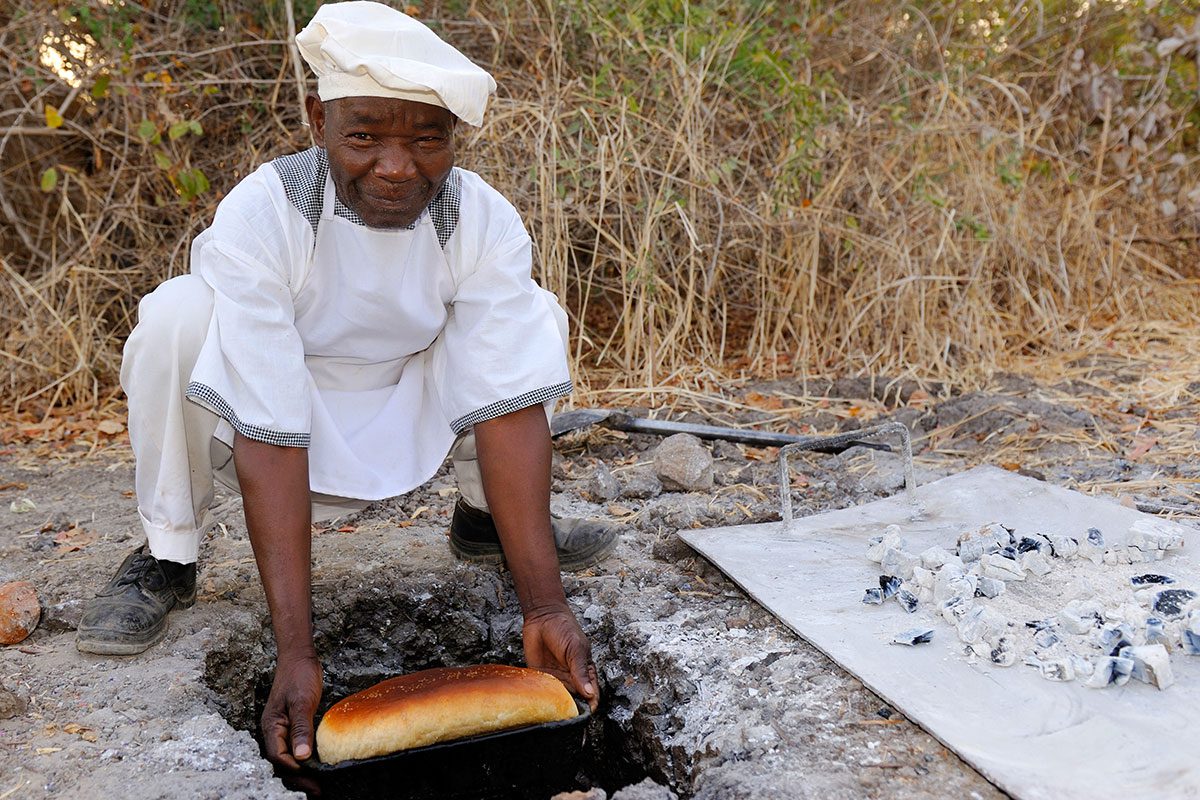
How your hut returns to the soil
Some of the most basic camps are simply a series of thatched huts with enclosures for your en suite, and open-air bathroom. Every year, men from the nearby villages venture into the bush after the rainy season when the grass is highest to cut sheaves for thatching. Artisans then spend hours and hours creating intricate woven panels using traditional crafts that become the walls, while other grass is turned into the roof. Floors are most often just dirt, covered in your suite by a rush carpet.
Light is provided by lanterns or solar power and water is piped from tanks. Yes, there will be a flush loo but air conditioning, private plunge pools and the Internet are unneeded extravagances; the focus is firmly on nature. Bathrooms’ pipes and basins are hidden by the grass, and features like shelves and towel rails are ingeniously fashioned out of sheaves of grass and sticks. Mostly you will have a traditional safari bucket shower where water is heated on the fire and then hoisted up and controlled via a pulley system – no luxuriating in the tub out here!
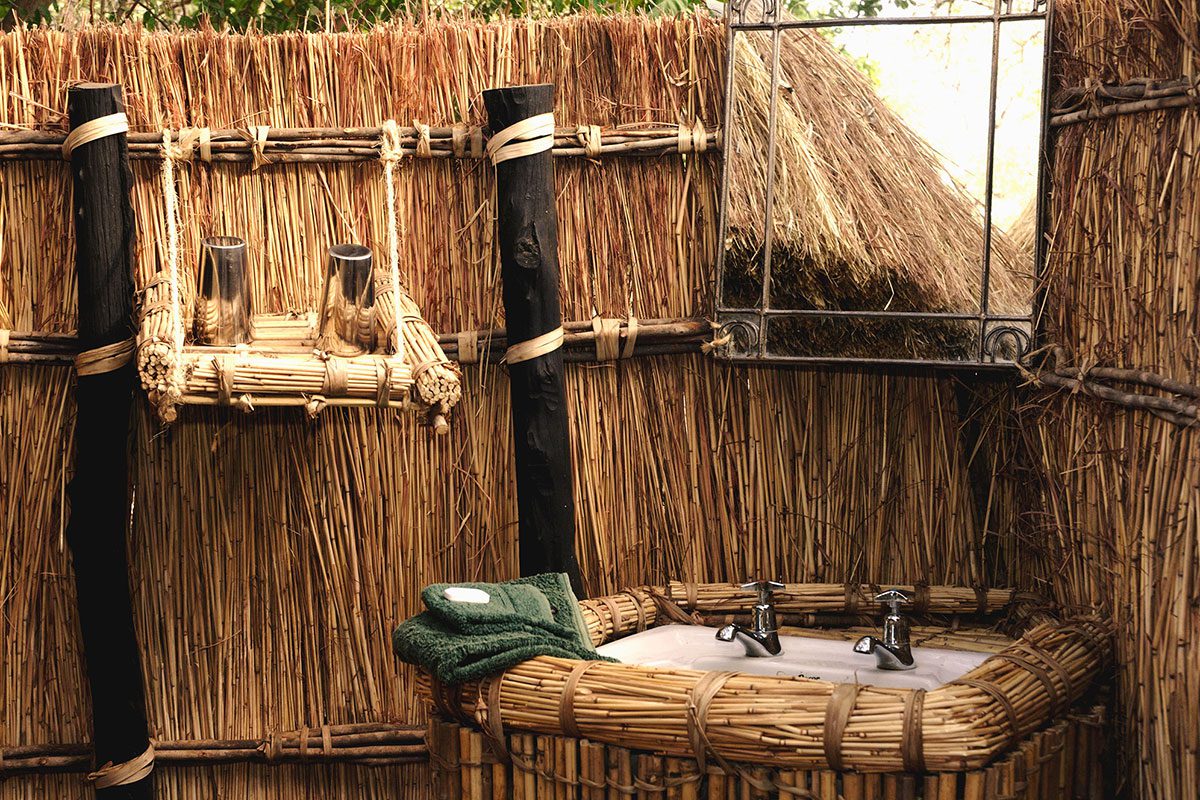
At the end of the mid-year winter season, most of these ‘bushcamps’ are simply left to return to the earth over the summer rainy season. Beds, furniture and equipment are all packed up for safekeeping and then the thatch is allowed to break down over the next six months until the villagers once again return to rebuild the camp.
The beauty of this system is manifold:
- Employment is provided for communities living within conservation areas.
- Age-old harvesting, thatching and weaving skills are kept alive.
- No foreign building material has to be trucked in at huge expense and environmental cost.
- Buildings are kept very human-scale.
- The camp’s carbon footprint is extremely low.
- The area can easily be absorbed back into the bush if necessary.
- No fences allow wildlife to wander through, giving you an intimate connection to nature.
- Thatch provides extremely effective climate control: it is insulating on cold evenings and cool during hot days.
Crocodile River Camp
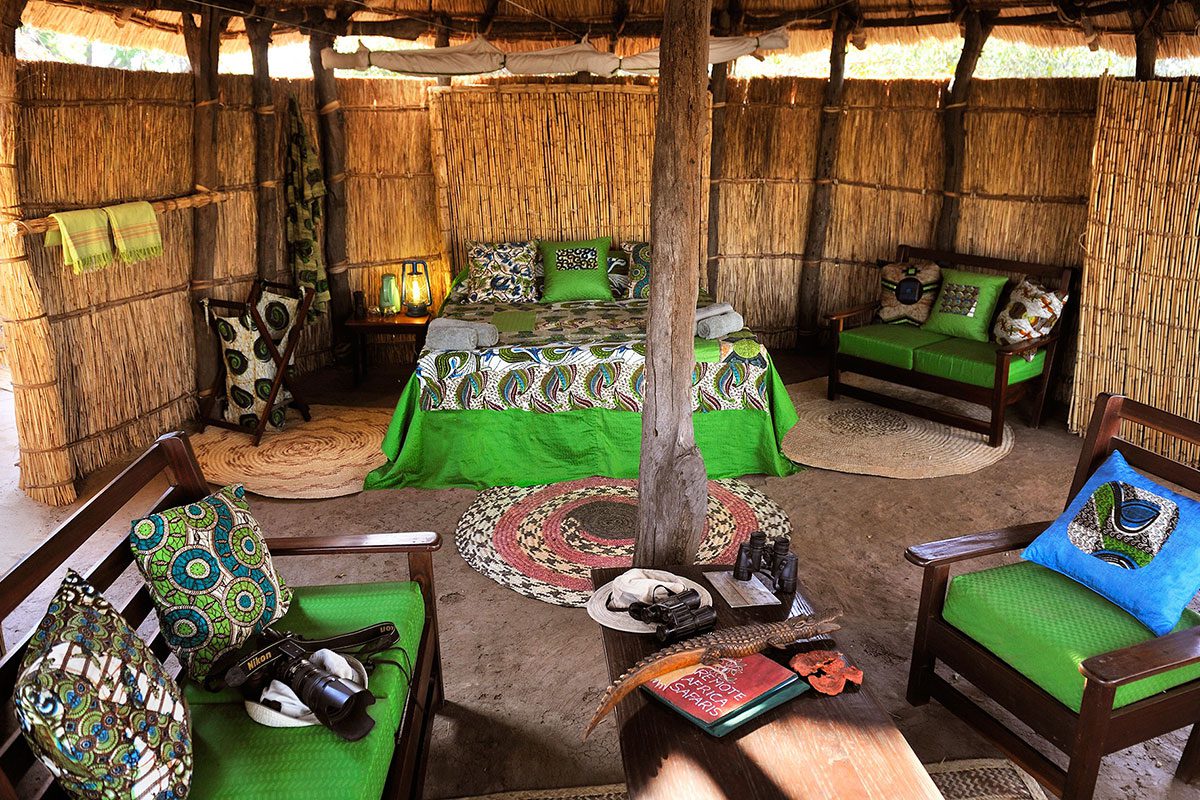
Crocodile River Camp is a traditional bushcamp on the western Luangwa River in South Luangwa National Park that is known for its fantastic walking safaris. Arrival is by canoe and walkers regularly encounter big game like elephant, buffalo and even lion. Magnificent pops of colour are provided by traditional Zambian fabrics, lengths of which are known as chitenge.
Tafika Camp
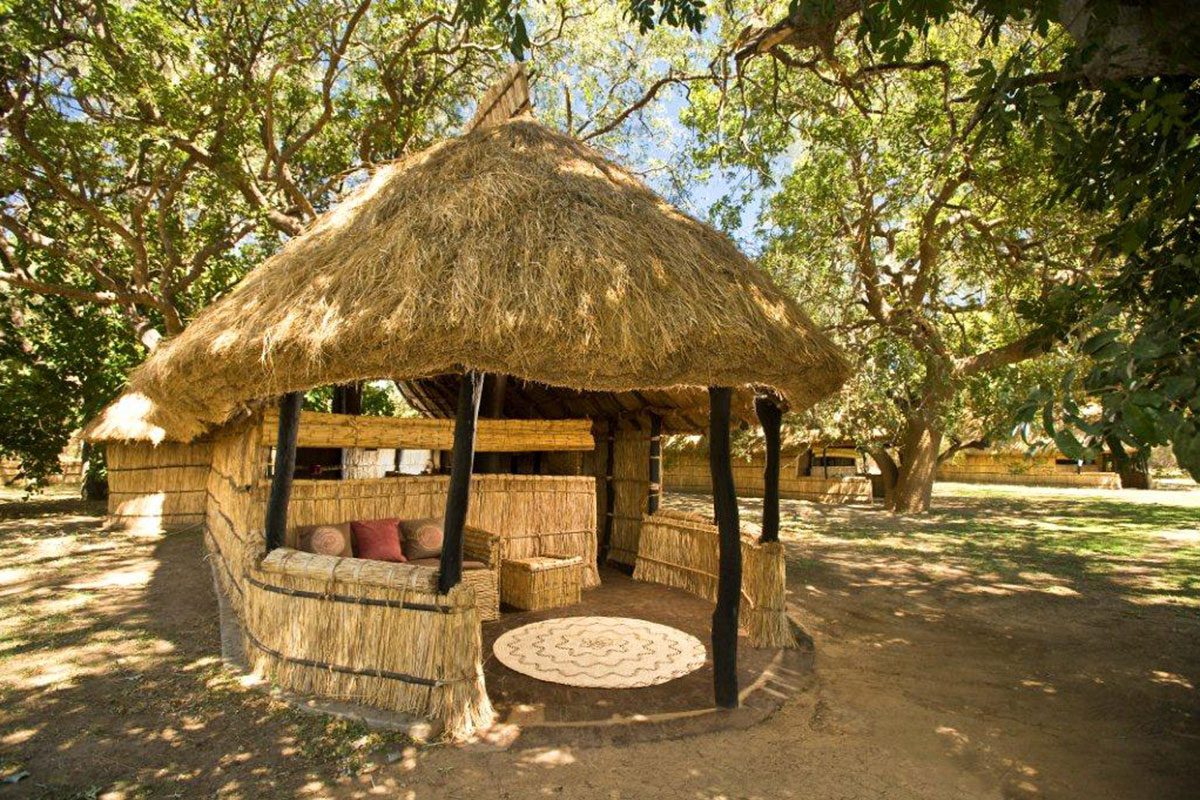
A slightly more permanent camp, the rooms here have welcome concrete floors and soaring ceilings. Set in the Nsefu Sector of South Luangwa, you have lovely river views – snag one of the hammocks to relax in before a traditional afternoon tea. If you’re feeling really active, go out on a guided mountain bike safari or head to Mkasanga village for a slice of Zambian life.
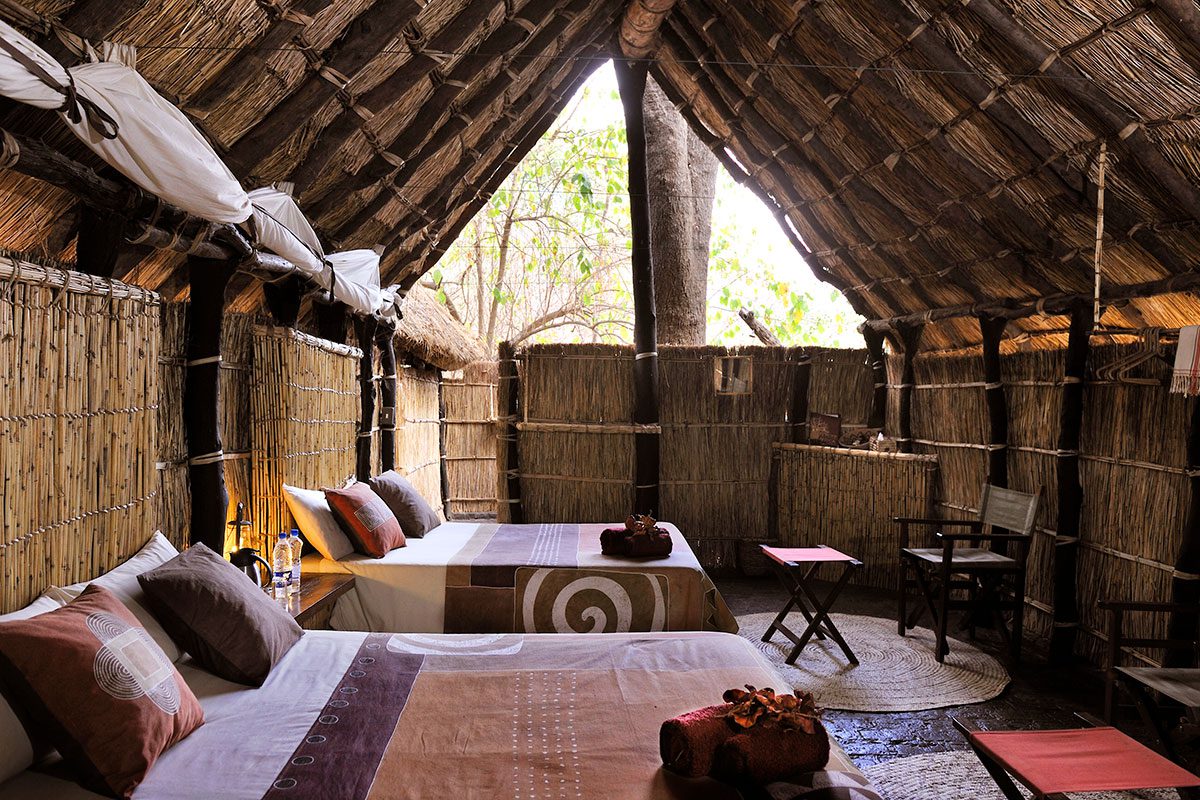
Kaingo Camp
A flagship lodge, Kaingo has plenty of sought-after extras, one of them being a special birding hide to take advantage of the carmine bee-eater colony on the banks of the Luangwa. These crimson birds bore holes into the riverbank to lay their eggs and then emerge in a scarlet flourish. Birders and photographers will love settling in to watch the bee-eaters come and go.
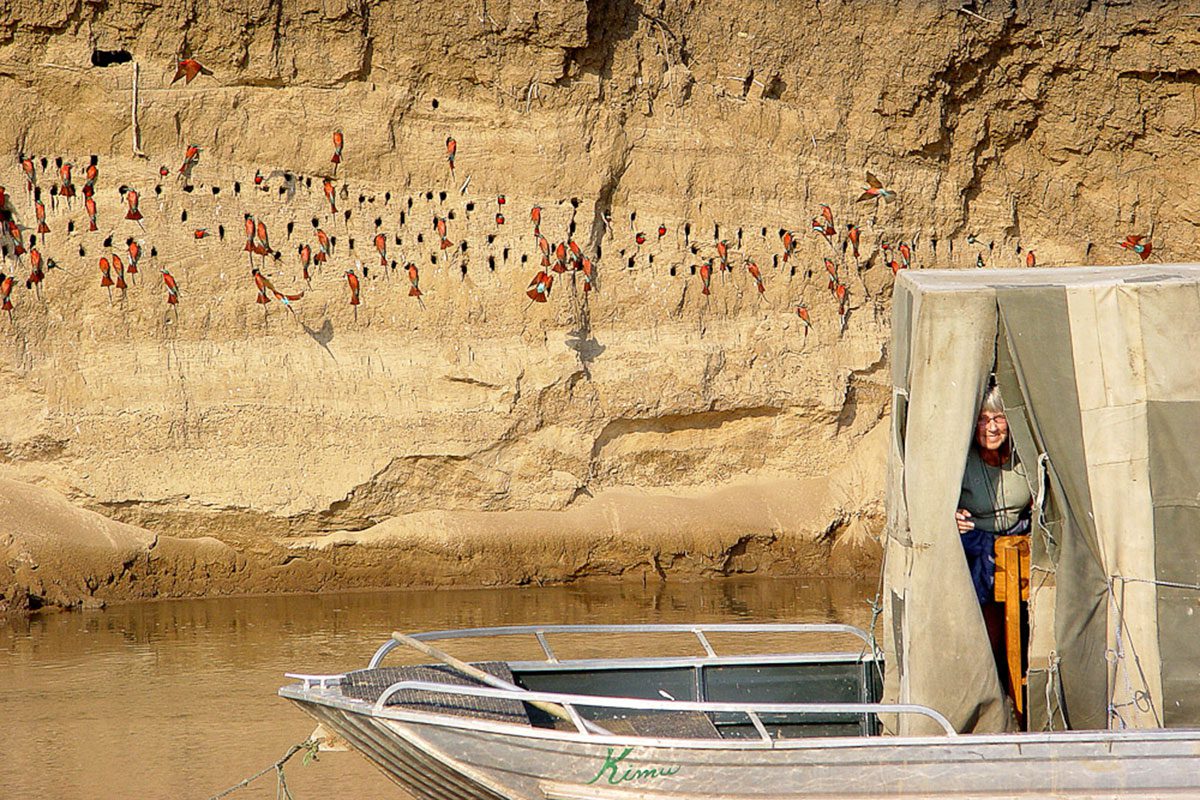
If birds aren’t your thing, head to the elephant hide where you can while away the hours watching babies splash about, juvenile males practise their fighting and the matriarchs keep a wary eye on everything from boisterous youngsters and lurking crocodiles to territorial hippos and, of course, even you.
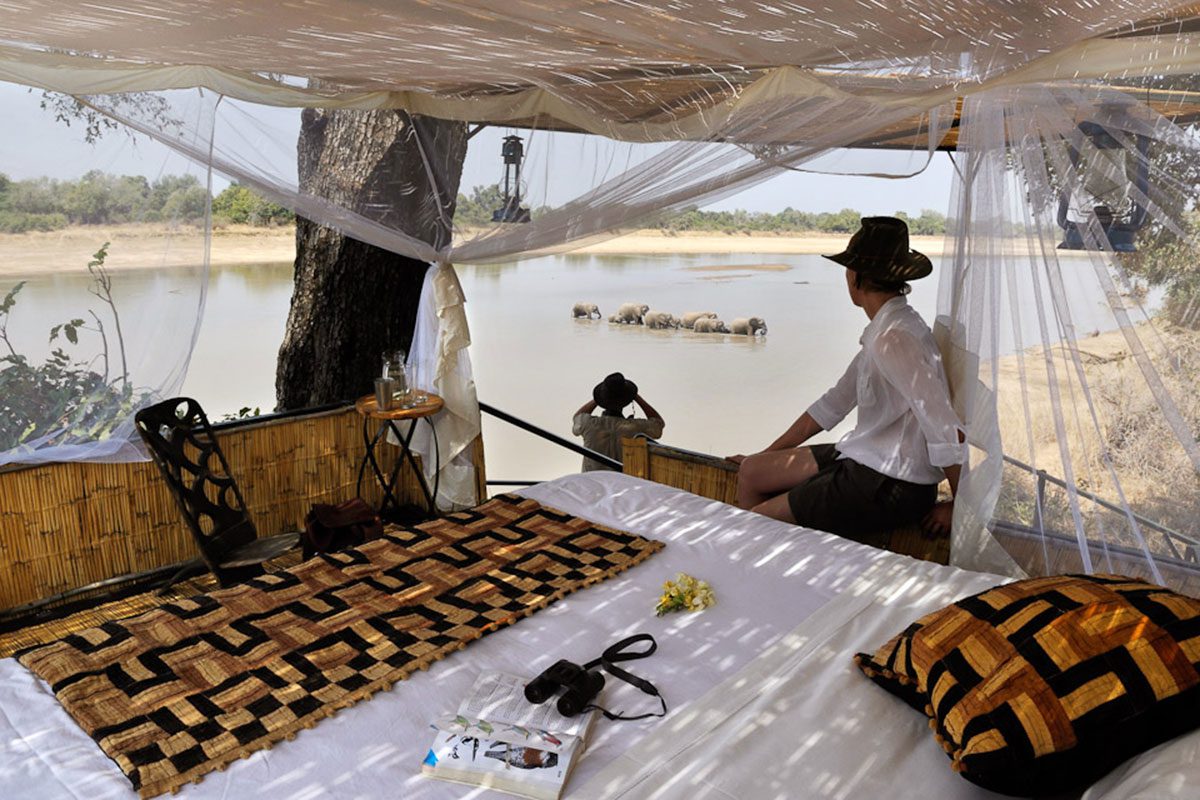
Kaingo is far more solidly built than other camps, with concrete floors, wooden door and glass windows. But it carries the spirit of bushcamps through its thatched roofs, open-air bathrooms and reed decks overlooking the Luangwa River.
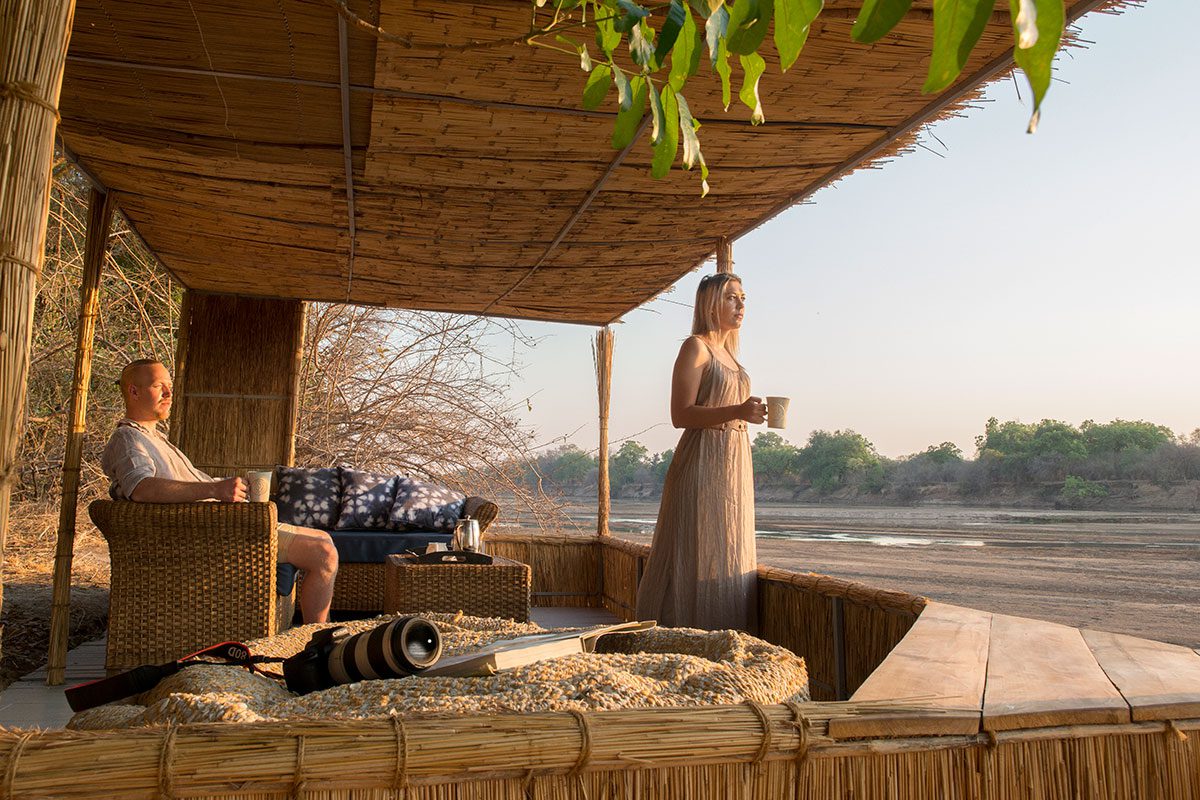
Chikoko Tree Camp
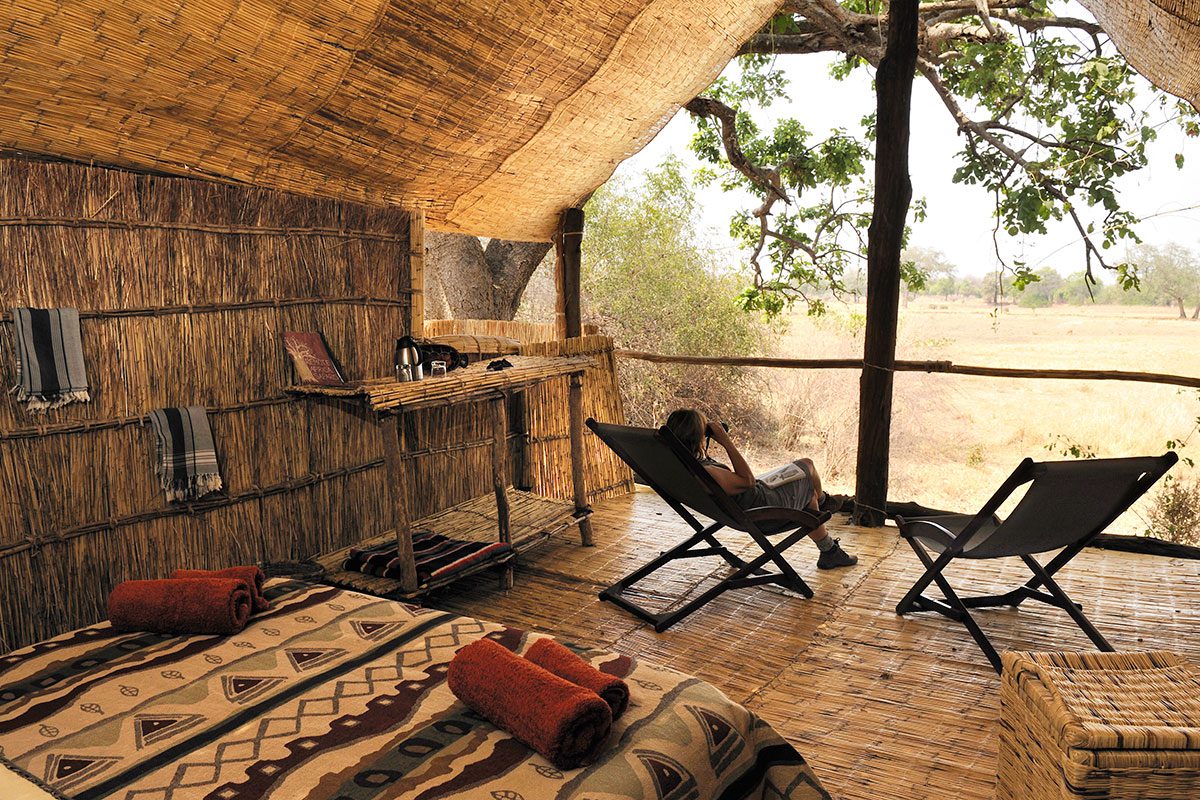
It’s back to basics at Chikoko Tree Camp, a sister lodge to Crocodile River Camp. Once again, expect to be transported back to the safaris of old, with rudimentary chalets made from grass mats and wooden struts. It’s a soothing stop-over on a multi-day walking safari and perfect if you’re a keen hiker and camper back home.
Kakuli Bush Camp
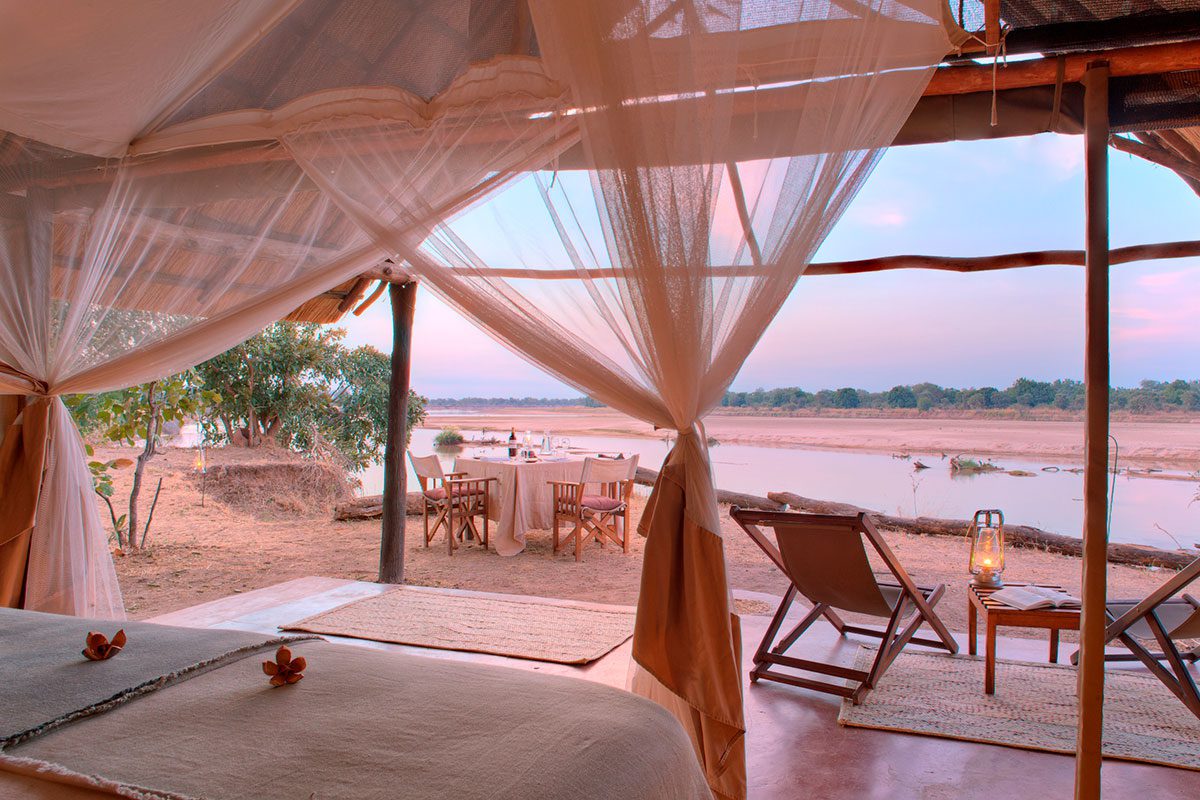
An enviable position where the Luwi and Luangwa rivers meet up gives guests at Kakuli access to stretches of riverine forest as well as views of the water (and hippos!). Kakuli is a classic thatch-and-reed lodge, made romantic with gauzy netting, flickering lanterns and deckchairs that just beg to be lazed in…
Mchenja Camp
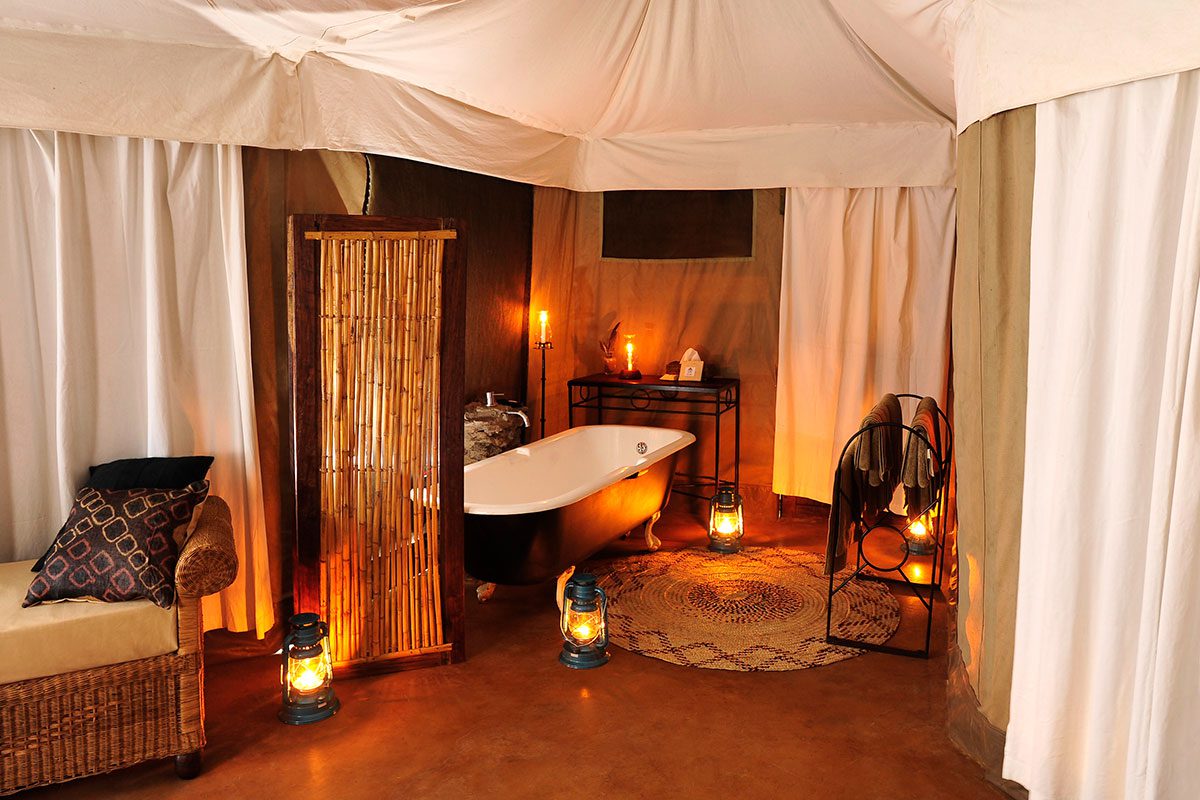
More of a tented camp with interiors swathed in cloth, one of the highlights at Mchenja are the clawfoot bathtubs, ideal for soaking in after a thrilling walking safari. Some of the tubs have even been positioned to take in vistas of the Luangwa River – what could be more relaxing than lying back with an iced drink and watching the park’s lifeblood meander past?
Mwamba Bush Camp
A true bushcamp, Mwamba has three popular facilities that make it a hit with visitors to this pristine slice of South Luangwa. ‘The Anthill’ is a lovely lookout spot that is a simple lean-to with ochre steps. This delightful perch is ideal for birders and photographers who really want to immerse themselves in nature. Honeymooners and couples might like to request a private dinner in the Anthill.
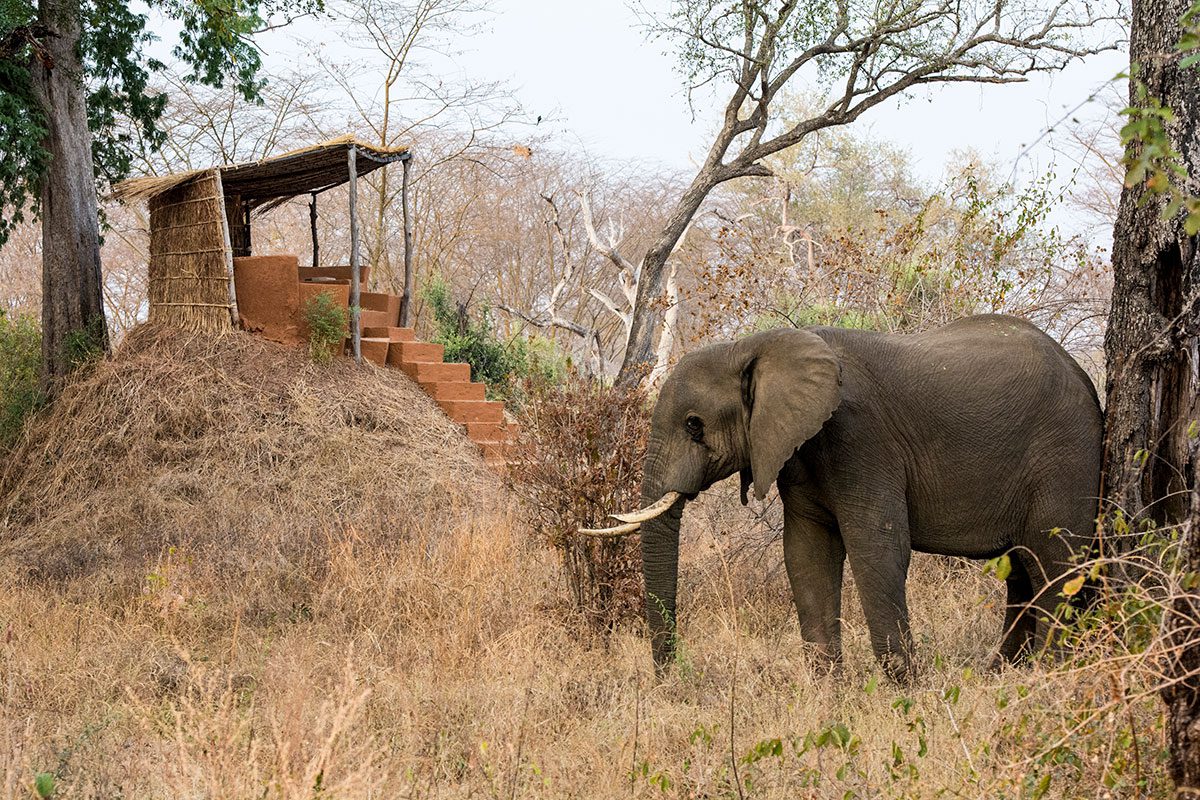
If you are really serious about getting the big ticks or outstanding snaps, then spend a day in the grass hide cut into the side of the riverbank. From this vantage point, you can capture fantastic shots of elephants drinking, focusing on how their intricately muscled trunks perform the most agile of movements.
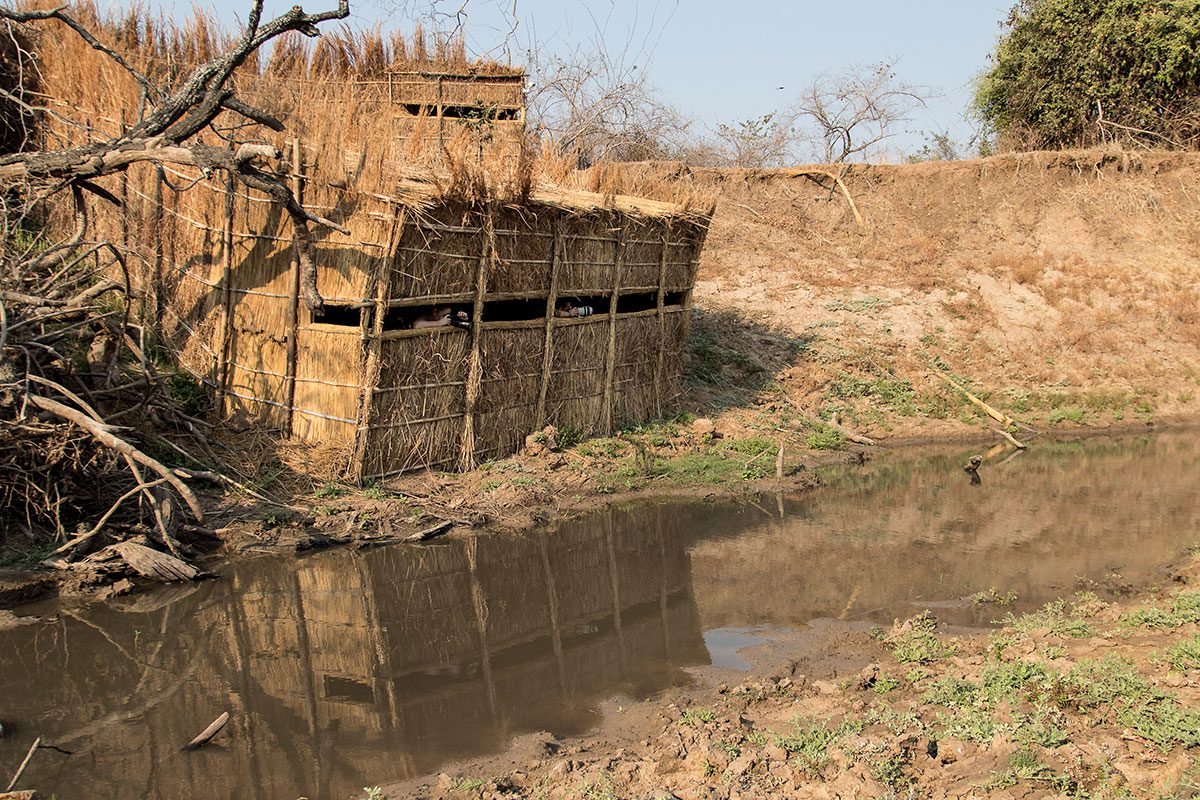
After a busy day at the Anthill or Hide, spend the evening unwinding in the charming Chitenge Bar. Strung with solar-powered chandeliers handmade from clay beads, this is a convivial haven in which to end another wonderful day at Mwamba.
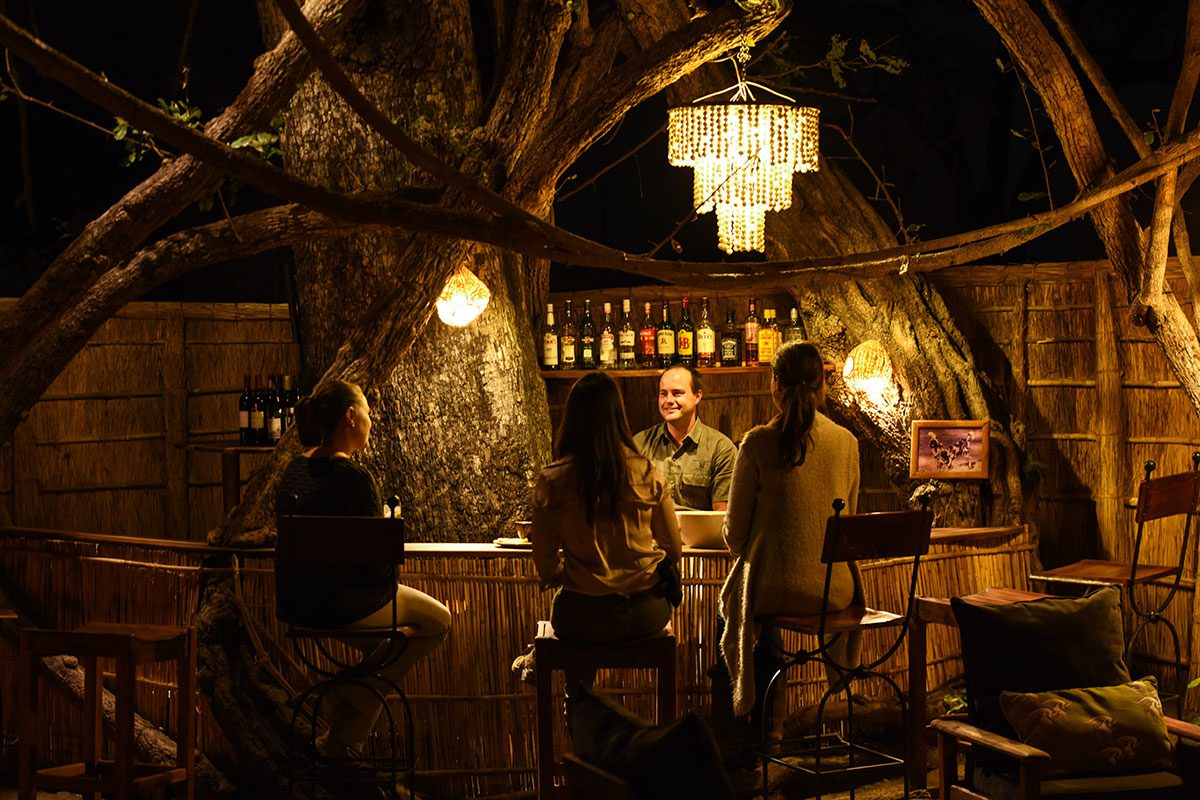
Numbu Star Bed
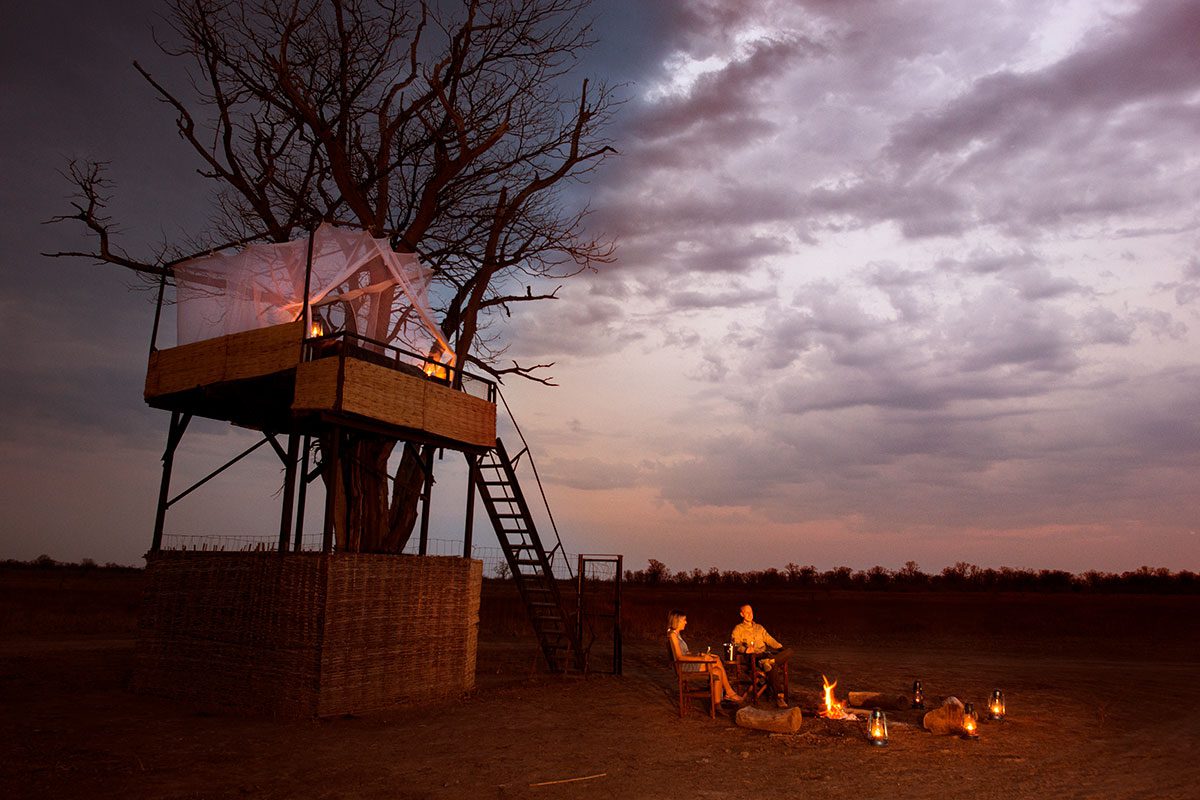
If you have a few nights at Mwamba or Kaingo, ask your Africa Safari Expert to arrange one night in the nearby Numbu Star Bed. This raised platform has a double bed upstairs and a loo below (don’t worry, it’s all enclosed by an animal-proof fence and gate). Arrive in time for sundowners and dinner around the campfire, and then retire to watch falling stars, the emergence of the Milky Way and – after a blissful sleep – wake to the sun gently creeping up over the horizon. Your guide will be waiting with hot coffee, the perfect start to another unforgettable day in South Luangwa.
